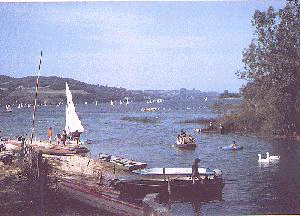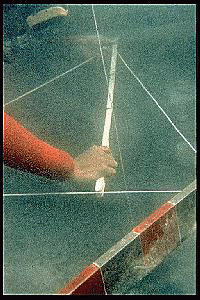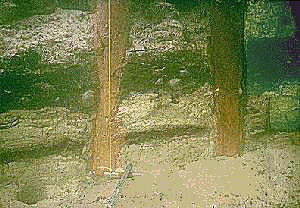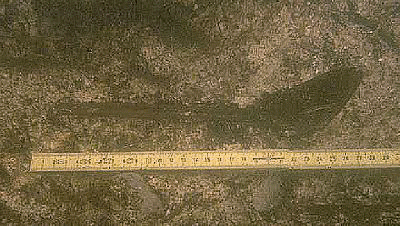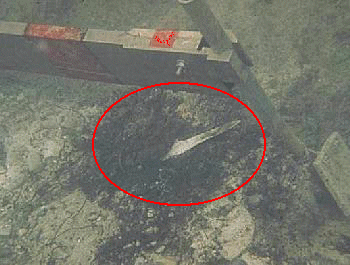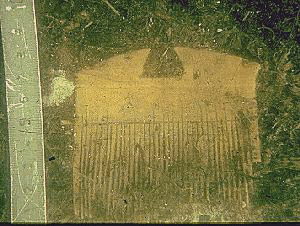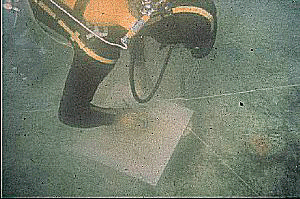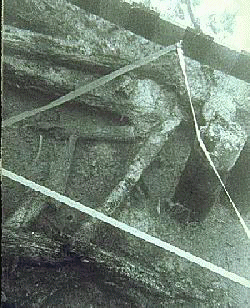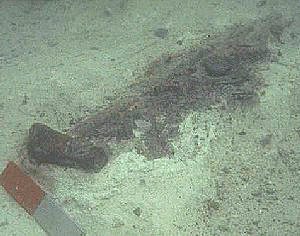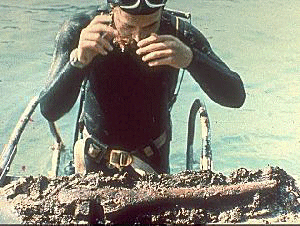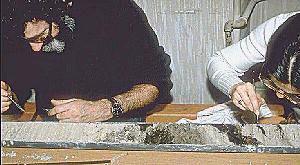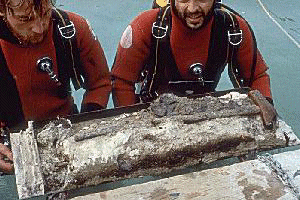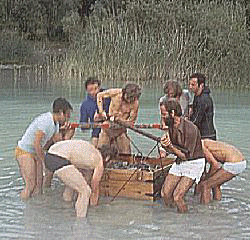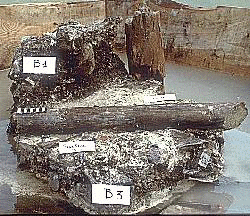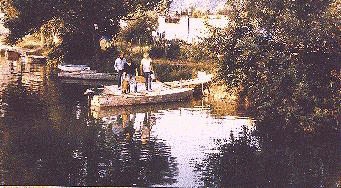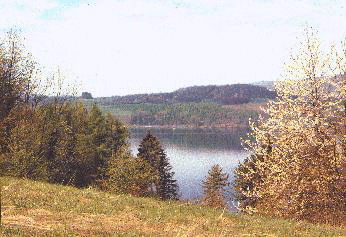Some
documents on the searches, the objects and the lake of Paladru
In
a section of ground we distinguishe both dark levels of occupations. Two fir
tree posts drives during the second occupation drilled the lower layer
Base
of a house among which posts and collapsed beams were clear. At the right top,
a portion of the metal grid of 5m aside to which is fixed a small triangle of
1m in plastic ribbon.
The
excavator takes measures inside the small triangle of 1m aside.
The
plans are drawn with a soft pencil on a plastic board.
The
discovery of some objects on the occupation layer
A
box tree weaving reed.
Notice the excellent conservation.
The
deer antler « scepter » and its handle will have gone out with the sediment...
During
the excavation, the first handled dagger set over the organic layer of the second
occupation.
A
yew tree spoon
Many
fragile and voluminous objects are extracted out with a block of ground.
Picking
out of one complete maple tree handle of axe.
En
laboratoire
In laboratory we sample on a carrot of sediments for the study pollens.
In dark the levels of occupation.
Some
rare and important objects
To check the stratigraphy, to take very fine samples,
etc. it was necessary of pull out big blocks of ground to excavate them in
open air.
To check the stratigraphy, to take very fine samples,
etc. it was necessary of pull out big blocks of ground to excavate them in
open air.
The operations were delicate to take out a mass
more of 700kg after a coffering with planks under the water..
And on the searched block are put in evidence:
- the lower layer B3 with put above, the beam of destruction of houses
- the superior layer very thick B1. A vertical post was taken in the mass..
In July... in the hills of Bas-Dauphiné
The pontoon of departure for the subaquatic excavations
The
lake keeps the charm of a nature still protected
Dagger in flint coming from Touraine ( Grand Pressigny).
Dagger handle is formed by a rolling-up of very fine fir twigs on a bed of vegetable
fibers.
A string carrying bag
Fragments of ropes (of a diameter of 15 in 18mm)
formed three strands of vegetable fibers
Quality of the work made by the Neolithic with
tools of flint:
precise joint of wooden handle inside the oblong
mortise dug in the antler polish « scepter ».
Detail of the rolling-up of the stalks of wicker
peeled on a dagger handle.
Both stalks join in the middle and are wound in
a sort of knot.
Notice the delicacy of the execution.
Copper
awl (length. 3cm)
proving the use of imported copper; in this time the metal was still very precious.
